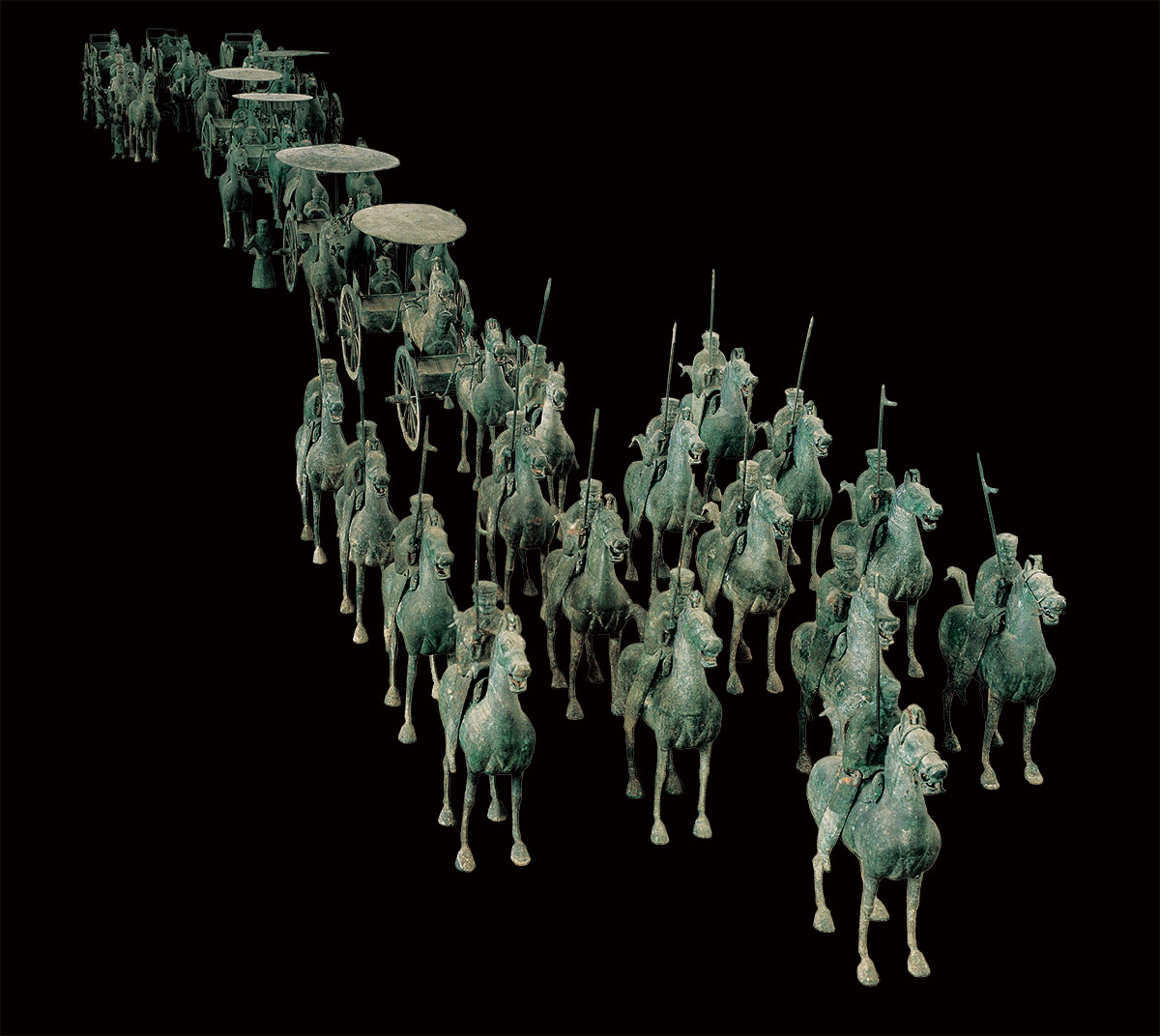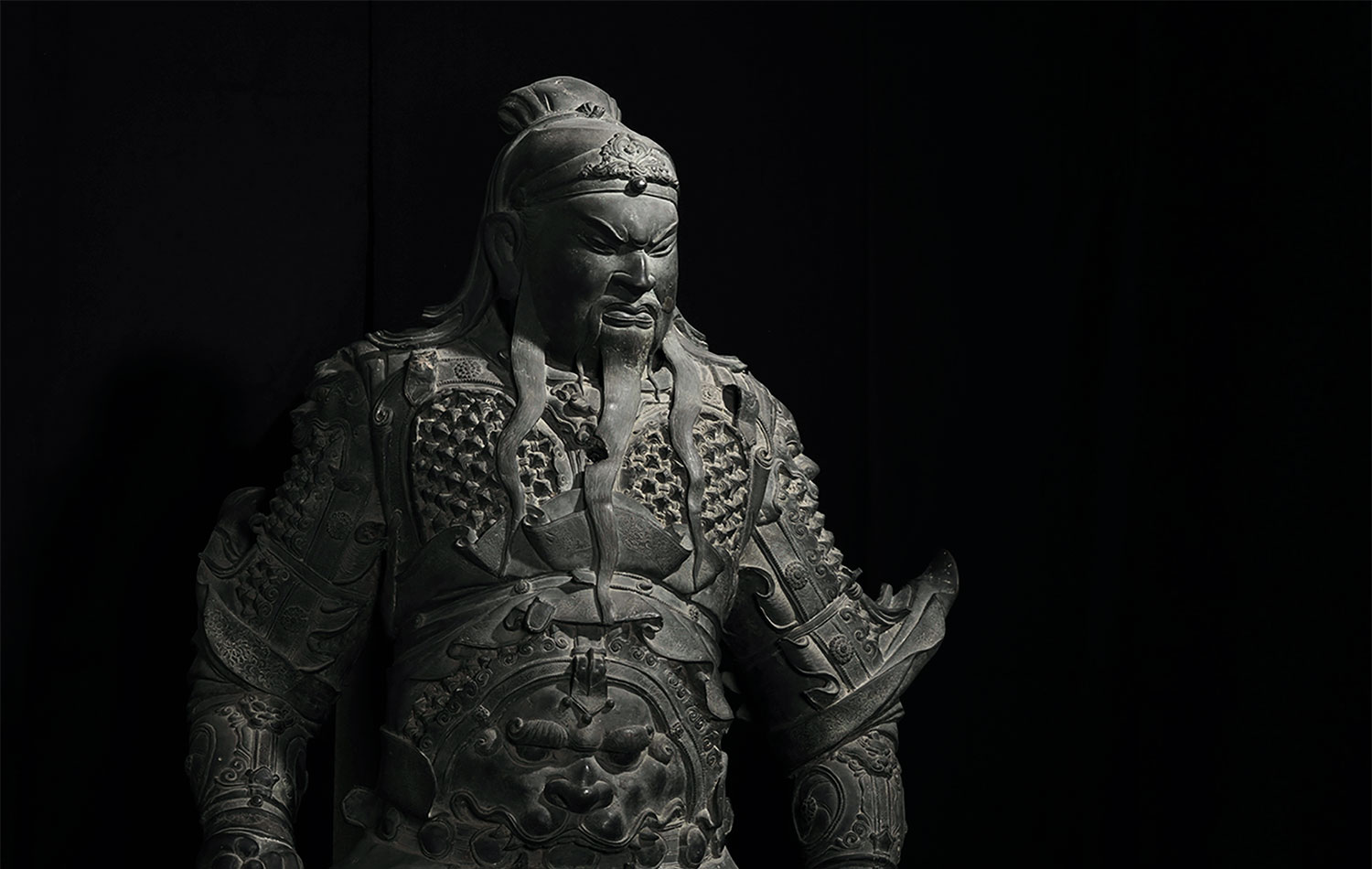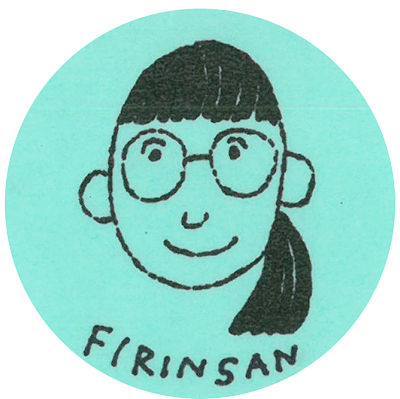Period:
October 1 (Tue) 2019 – January 5, 2020 (Sun)
Opening hours:
Sundays, Tuesdays – Thursdays, 09:30-1700 (Last
admission at 16:30)
Fridays & Saturdays (Extended hours) 09:30-20:00 (Last admission at
19:30)
Closed:
Mondays, except on public holidays of October 14 (Mon) and November 4
(Mon).
Closed on October 15 (Tue) and November 5 (Tue), December 23 (Mon) - 31
(Tue)
Admission fee:
Adults – 1,600 yen (1,400 yen)
University and high school students – 1,000 yen (800 yen)
Junior high school and elementary school students – 600 yen (400 yen)
[Late admission price] (After 17:00)
Adults – 1,400 yen
University and high school students – 800 yen
Junior high school and elementary school students – 400 yen
*Sales for late admission tickets will open after 17:00 at the counters and cannot be bought in advance before 17:00. Ticket is valid only on day of purchase.
*Admission is free for persons with disabilities and up to 1 accompanying caretaker. Please present the necessary documents.
*Price in ( ) reflects the cost of advance tickets and group (more than 20 people) tickets
*( ) also reflects the cost for persons over 65 years old. Please present documents that reflect your birth date, such as your health insurance card or driving license.
List :
Greetings
The Three Kingdoms period was a time when the states of Wei, Shu and Wu
battled for supremacy. It only lasted around one hundred years, from the
Yellow Turban Rebellion in 184 to the unification of China under the
Western Jin dynasty in 280, but it inspired numerous works of theater
and literature, and is still very popular today in both Japan and
China.
The study of this period entered a new era with several major
excavations, including the discovery of the long-lost mausoleum of the
Wei king Cao Cao in Anyang city, Henan province. This exhibition
utilizes these new findings to unveil the true story of the Three
Kingdoms period. The exhibition commemorates the 40th anniversary of the
signing of the Japan-China Cultural Exchange Agreement of 1979. We
believe it will contribute to the promotion of further cultural exchange
between Japan and China.
Finally, we would like to offer our deepest gratitude to everyone from
Japan and China, whose support has made this exhibition possible, and to
all our valued visitors.
October 2019
The organizers
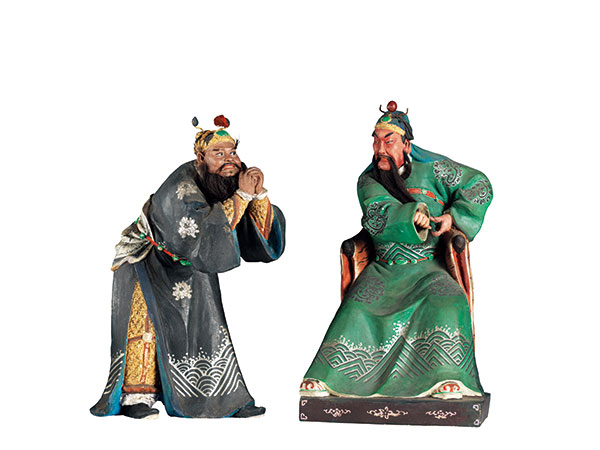
Guan Yu and Zhang Fei
By Zhang Yuting
Qing dynasty, 19th century
Tianjin Museum
For the first time in Japan
80% of the collection, including relics from Cao Cao’s mausoleum and the first chamber of the Wu royal family’s Shangfang mausoleum, will be exhibited in Japan for the first time. Let us unveil the hidden world of the 3 Kingdoms before your eyes!
Life-sized reproductions
Cao Cao’s mausoleum is the largest extant Three Kingdoms grave excavated thus far. As the interior of the actual grounds in Anyang is still out of bounds for the general public, the Museum has created a reproduction to scale for this exhibition to show how these extraordinary heroes were laid to rest.
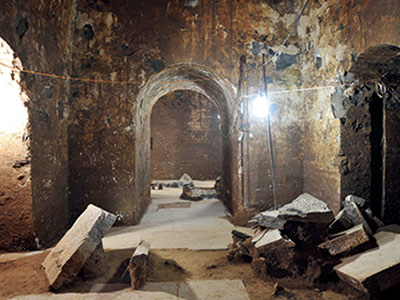
Interior of Cao Cao’s mausoleum (Anyang city, Henan province)
Photos graciously provided by the Henan Provincial Institute of Cultural
Heritage and Archaeology
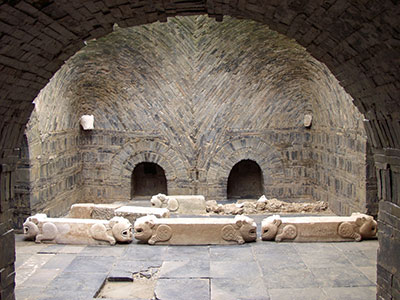
Shangfang Mausoleum, Chamber 1 (Nanjing city, Jiangsu province)
Photos graciously provided by the Nanjing Museum Administration
Photography is permitted within this exhibition
Visitors may take photos within the entire Three Kingdoms special exhibition hall. However, please do not use flash or tripods when taking photos of the exhibits. This photography policy is subject to change under extenuating circumstances according to the Museum’s discretion. For more details, please refer to the Museum website or any of the signs placed around the exhibition hall.
Prologue: Legends of the Three Kingdoms Period
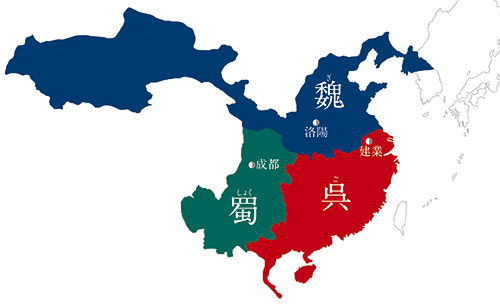
The Three Kingdoms period began around 1,800 years ago amid the chaos of the Eastern Han dynasty (25–220). The events of this time and tales about the rise and fall of the era’s various warlords were recorded and later became popular legends. They provided the inspiration for numerous works of poetry, literature and painting, with military commanders like Guan Yu even deified by later generations. All this led to the formation of a rich and colorful “Three Kingdoms culture” that still resonates to this day.
Deified Guan Yu
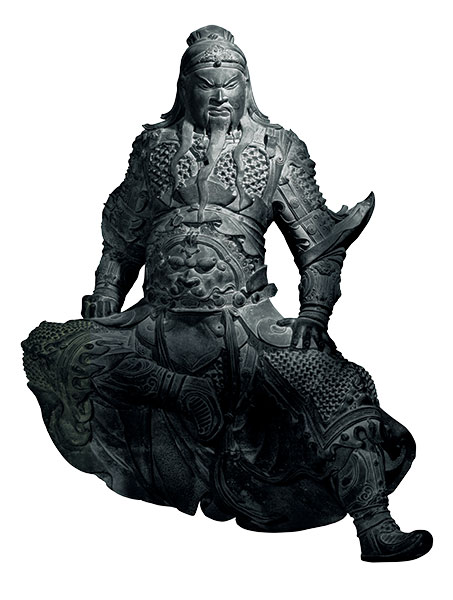
Guan Yu
Ming dynasty, 15th-16th century
Xinxiang Museum
Zhang Fei, Enraged!
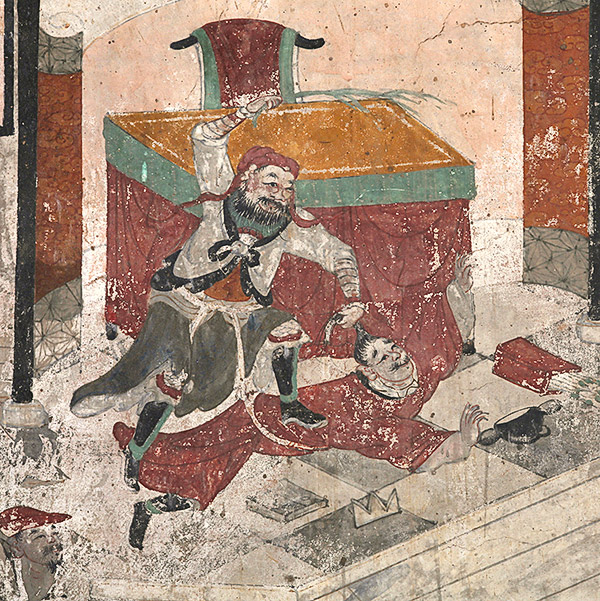
Guandi Temple Murals <Zhang Fei Punishes Supervisor> (Cropped)
Qing dynasty, 18th century
Passed down by Fulong Temple, Shuimenta, Qingshuihe County, Hohhot City, Inner
Mongolia Autonomous Region
Inner Mongolia Museum
Chapter 1: Cao Cao, Liu Bei and Sun Quan – Tracing the Roots of the Three Great Leaders
Cao Cao founded the state of Wei. Using a power base inherited from his ancestors, he wielded influence at the heart of the Han dynasty court. This enabled him to achieve supremacy during turbulent times. Liu Bei founded the state of Shu. He claimed to be related to the Han imperial family and he fought to revive the Han dynasty’s fortunes. Sun Quan founded the state of Wu. He forged his own unique path to power by developing a strong naval network. These three men were lionized by later generations. This chapter uses specially-selected cultural artefacts to trace their roots.
Cao Cao’s ancestral heirlooms
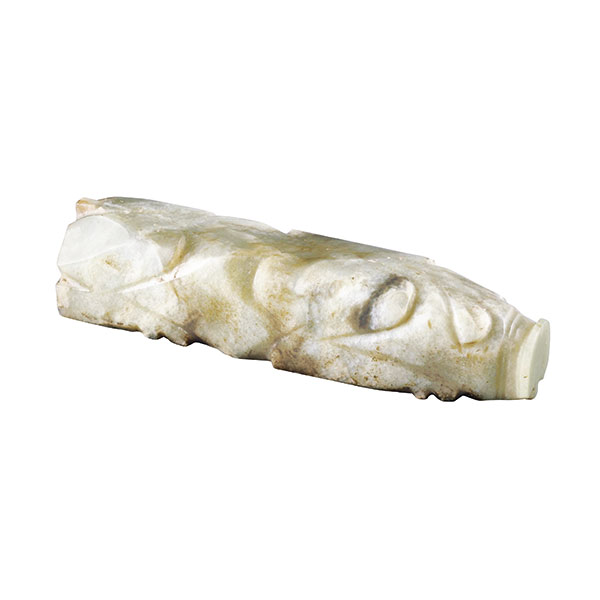
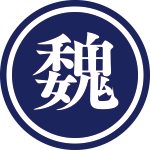
First-grade cultural relic:
Jade Pig
Eastern Han dynasty, 2nd century
Excavated at Tomb No. 1, Dongyuan Village, Bozhou City, Anhui, 1973
Bozhou Museum
Luxurious wine flagon owned by Liu Bei’s ancestor, Prince Jing of Zhongshan
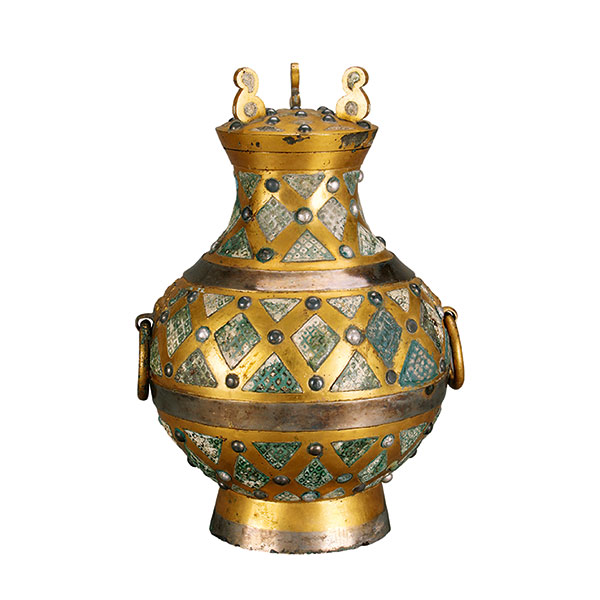
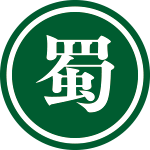
First-grade cultural relic:
Jar
Western Han dynasty, 2nd century BC
Excavated at the Tomb of King Liu Sheng of Zhongshan and his wife, Baoding
City, Hebei, 1968
Hebei Provincial Institute of Cultural Relics
Naval support: symbol of the Eastern Wu kingdom
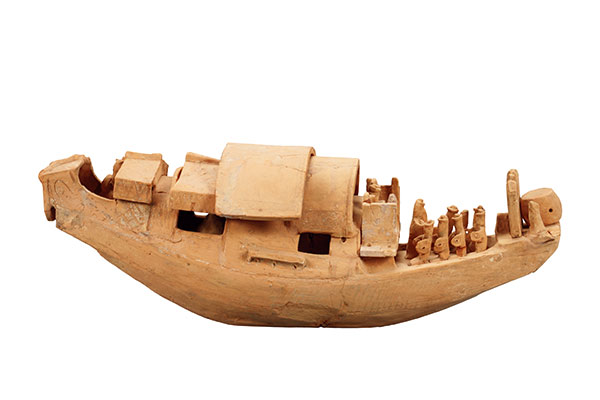
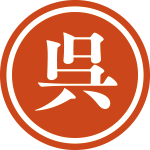
Cargo and Passenger Boat
Eastern Han dynasty–Three Kingdoms period (Wu), 3rd century
Excavated at Tomb No. 14, Liangjuntong, Guigang City, Guangxi Autonomous
Region, 2010
Guangxi Institute of Cultural Relics and Archaeology
Chapter 2: The Han Dynasty – Shadow and Light
The Han dynasty became one of the largest Chinese empires with a rule that extended across much of present-day China. However, the imperial court was rocked by internal political strife at the end of the 2nd century, with the reach of the emperor waning. Chaos reigned throughout society. The Yellow Turban Rebellion occurred when groups with beliefs that later developed into Taoism arose in the regions and tried to overthrow the old order, while the warlord Dong Zhuo launched a reign of tyranny in the Han capital Luoyang.
An opulent ceremonial procession guarded by horses
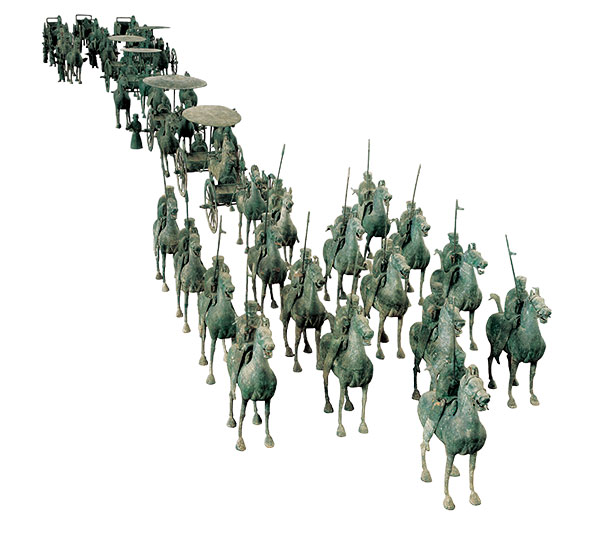
Guards of Honor Figurines
Eastern Han dynasty, 2nd-3rd century
Excavated at Leitai Tomb, Wuwei City, Gansu, 1969
Gansu Provincial Museum
Chapter 3: Wei, Shu and Wu – A Tripartite Battle for Supremacy
The states of Wei, Shu and Wu were formed at the end of the Eastern Han period. They became locked in a tripartite struggle, with fighting particularly fierce at their respective borders. After Cao Cao passed away in 220, he was succeeded by his son Cao Pi (Wen Di). Cao Pi then seized the throne from the Eastern Han emperor. This move was met with resistance from Liu Bei in Shu and Sun Quan in Wu, with each warlord claiming legitimacy and announcing the founding of their own states. This chapter traces this tumultuous transition to a new era through weapons from the Eastern Han and Three Kingdoms periods together with cultural artefacts related to famous battles.
Carved seal immortalising Cao Cao’s beloved nephew and general
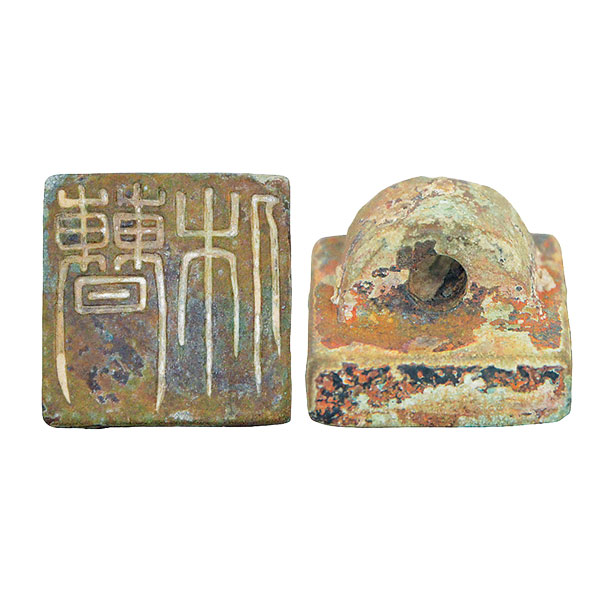

Seal with Chinese Characters “Cao Xiu”
Three Kingdoms period (Wei), 3rd century
Excavated at the Tomb of Cao Xiu, Mengjing Country, Luoyang City, Henan,
2009
Luoyang City Cultural Relics and Archaeology Research Institute
Shu lacquerware, favoured by famed Wu general Zhu Ran
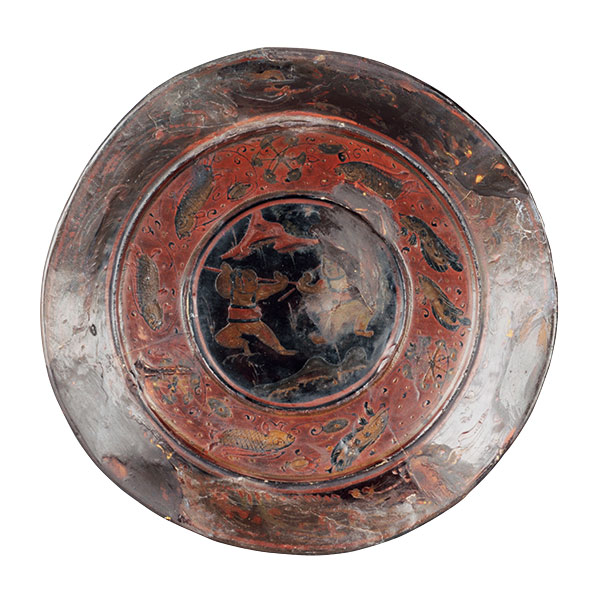

Plate with Picture of Children
Three Kingdoms period (Wu), 3rd century
Excavated at the Tomb of Zhu Ran, Ma’anshan City, Anhui, 1984
Ma’anshan City, the Three Kingdoms ZhuRan Family Cemetery Museum
Weapons that evoke a realistic feeling of the battlefield
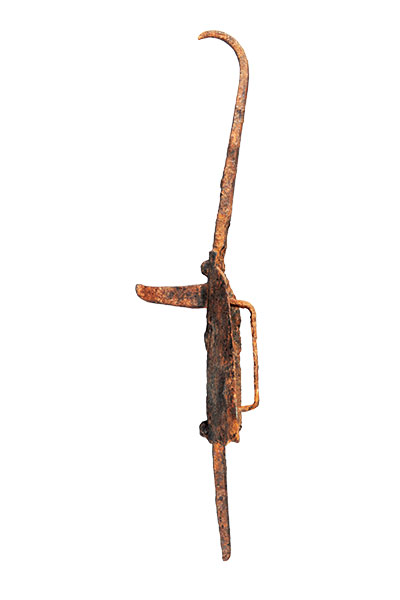

Gou Xiang Shields
Eastern Han dynasty–Three Kingdoms period (Shu), 3rd century
Excavated at Baihuzui Tombs, Mianyang City, Sichuan, 1998
Mianyang Museum
Chapter 4: A Journey Through the Three Kingdoms
The state of Wei held sway in the Yellow River basin, the geographical centre of the Han dynasty. The state of Shu controlled the plain upstream of the Yangtze River, an area of rich natural beauty, while the state of Wu’s stronghold was located in the plains and coastal areas mid and-downstream of the Yangtze. These different climates gave rise to distinctive cultures and customs. This chapter explores the unique characteristics of the three states through artefacts excavated from these areas.
Potential links to unique Japanese bronze mirrors from China
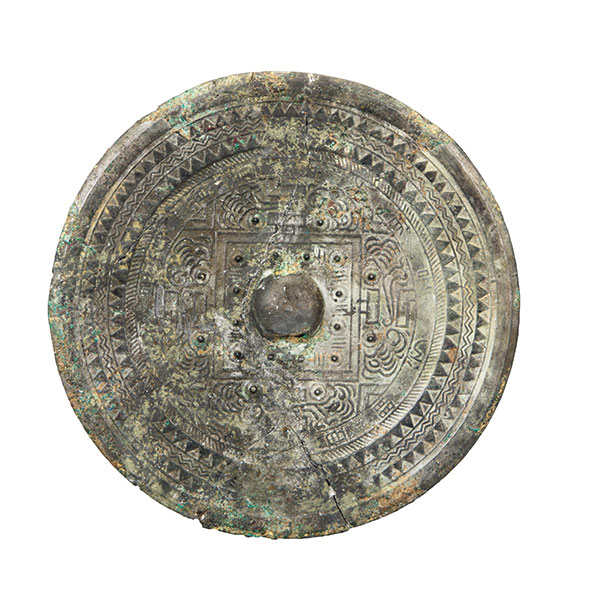

Mirror with a Square and TLV Patterns, and Bird Motifs
Eastern Han dynasty–Three Kingdoms period (Wei), 2nd–3rd century
Excavated at Tomb No. 1, Sandaohao, Liaoyang City, Liaoning, 1955
Liaoning Provincial Museum
Sun Quan’s cherished Southern glass beads
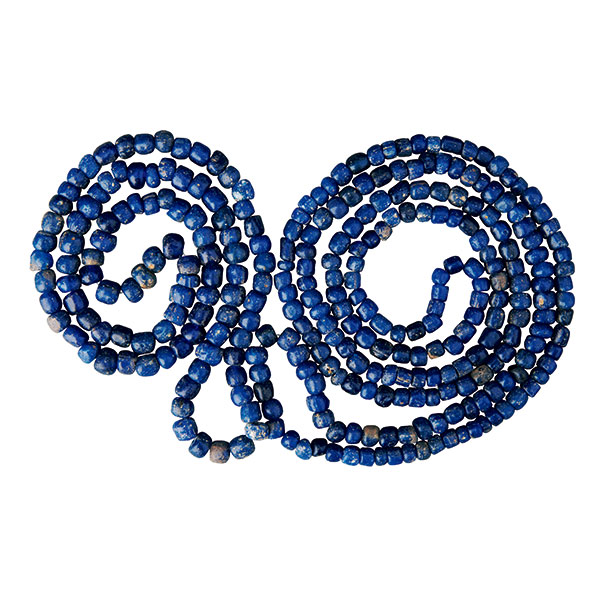

String of Beads
Eastern Han dynasty, 1st–3rd century
Excavated at Tomb No. 13, Fengliuling, Guigang City, Guangxi Autonomous
Region, 1955
Guangxi Zhuang Autonomous Region Museum
Comedic entertainment in the Shu kingdom
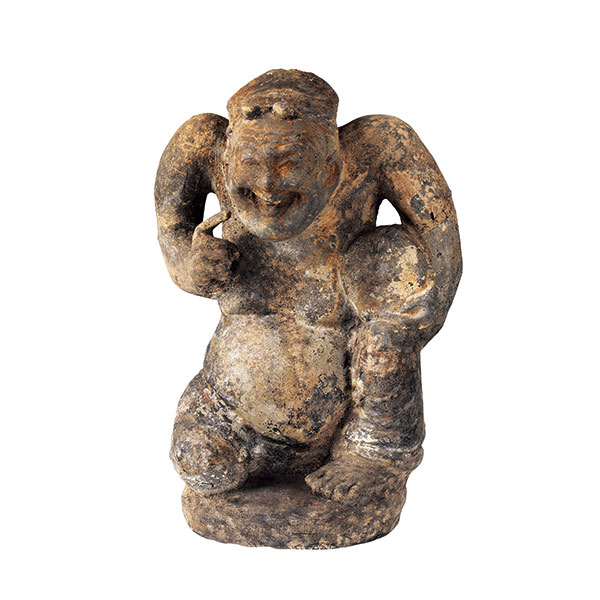

Storytelling Figurine
Eastern Han dynasty–Three Kingdoms period (Shu), 2nd–3rd century
Excavated at Tomb No. 11, Huadeng Tombs, Zhong County, Chongqing City
Chongqing China Three Gorges Museum
Chapter 5: The Cao Cao Mausoleum and Other Grand Tombs from the Three Kingdoms Period
The transition from the end of the Eastern Han period to the Three Kingdoms period in the early 3rd century also saw the emergence of a new approach to tomb building. Tombs became less ostentatious as rulers began to place more value on simplicity and frugality. The philosophies and social values of these rulers are on full display in eminent ancient tombs scattered across each region, including the Cao Cao Mausoleum, which was excavated in 2008–2009.
Premiering for the first time outside of China
Rare artefacts from Cao Cao’s tomb, finally in Japan!
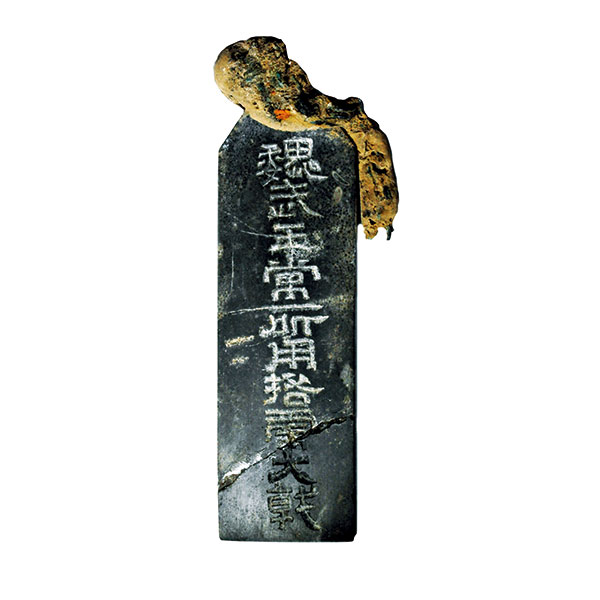

First-grade cultural relic:
Stone Tablet with Inscriptions
Eastern Han dynasty–Three Kingdoms period (Wei), 3rd century
Excavated at the Cao Cao Mausoleum, Anyang City, Henan, 2008–2009
Henan Provincial Institute of Cultural Heritage and Archaeology
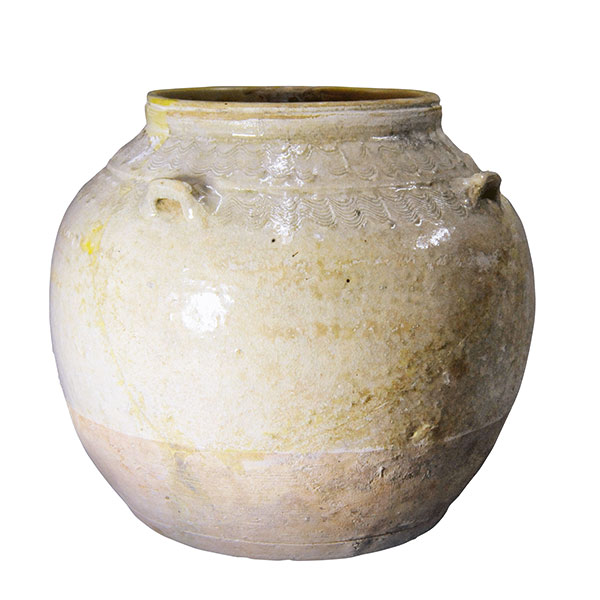

First-grade cultural relic:
Guan Jar
Eastern Han dynasty–Three Kingdoms period (Wei), 3rd century
Excavated at the Cao Cao Mausoleum, Anyang City, Henan, 2008-2009
Henan Provincial Institute of Cultural Heritage and Archaeology
Money trees, even in the Shu kingdom
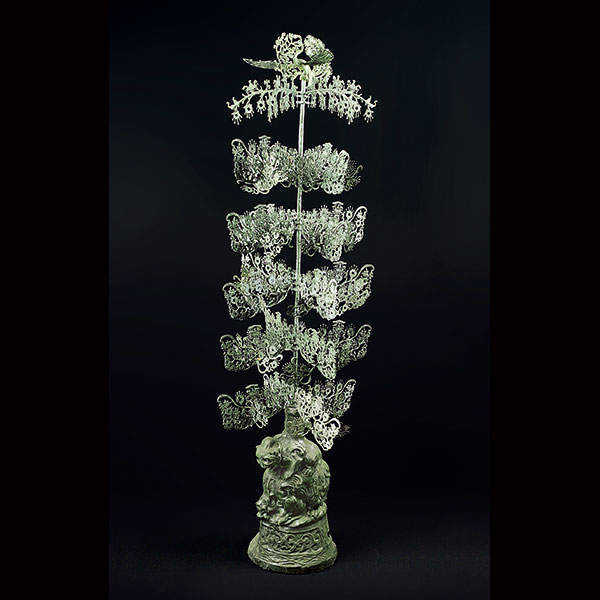

First-grade cultural relic:
Money Tree
Eastern Han dynasty, 2nd century
Excavated at Shixiang Village, Xinfeng Town, Guanghan City, Sichuan,
1983
Guanghan Cultural Relics Administration (Guanghan Museum)
Behold the Royal Wu Mausoleum!
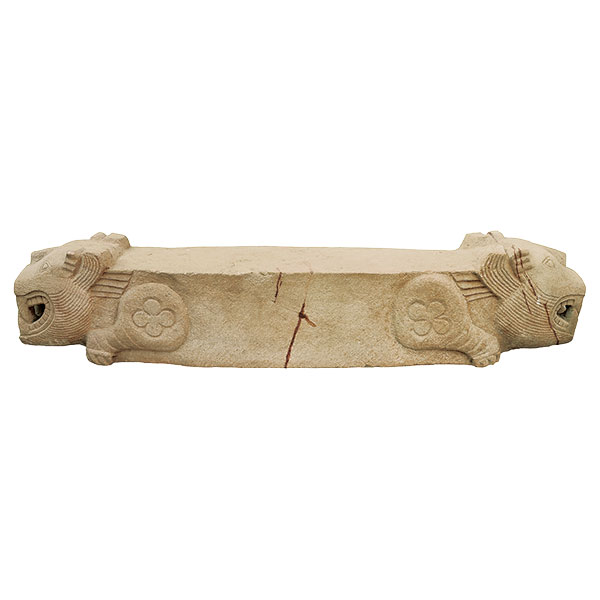

Tiger-shaped Coffin Stand
Three Kingdoms period (Wu), 3rd century
Excavated at Tomb No. 1, Shangfang, Jiangning District, Nanjing City,
Jiangsu, 2006
Nanjing Museum Administration
Epilogue: The End of the Three Kingdoms Period and the Rise of a New Power
After many long years of fighting, control of China ultimately eluded the forces of Wei, Shu and Wu. Instead, a powerful Wei general called Sima Yi rose to prominence, with his grandson Sima Yan going on to establish the Western Jin dynasty (265–420). The Sima administration established a new order in China while protecting the base of the powerful clans in each region.
The shortest extant retelling of the Three Kingdoms story
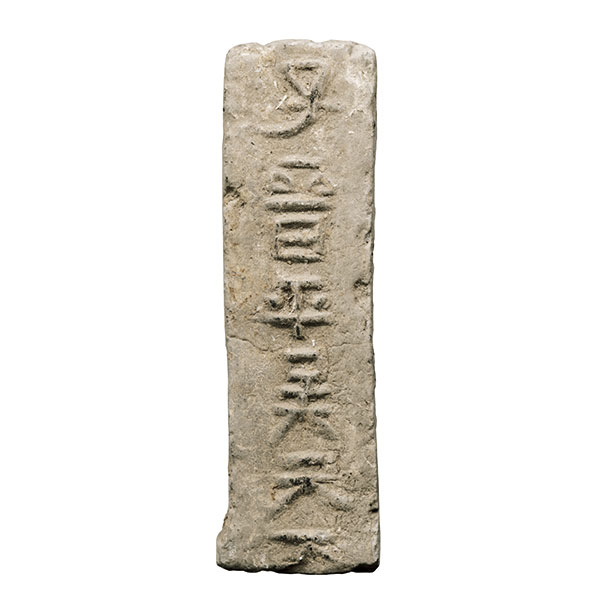

(拓本)
Brick with Inscription Reading “Jin Ping Wu Tianxia Daping”
Western Jin dynasty, dated 280
Excavated at Tomb No. 1, Suoshu Brick Factory Site, Jiangning District,
Nanjing City, Jiangsu, 1985
Nanjing Museum Administration
